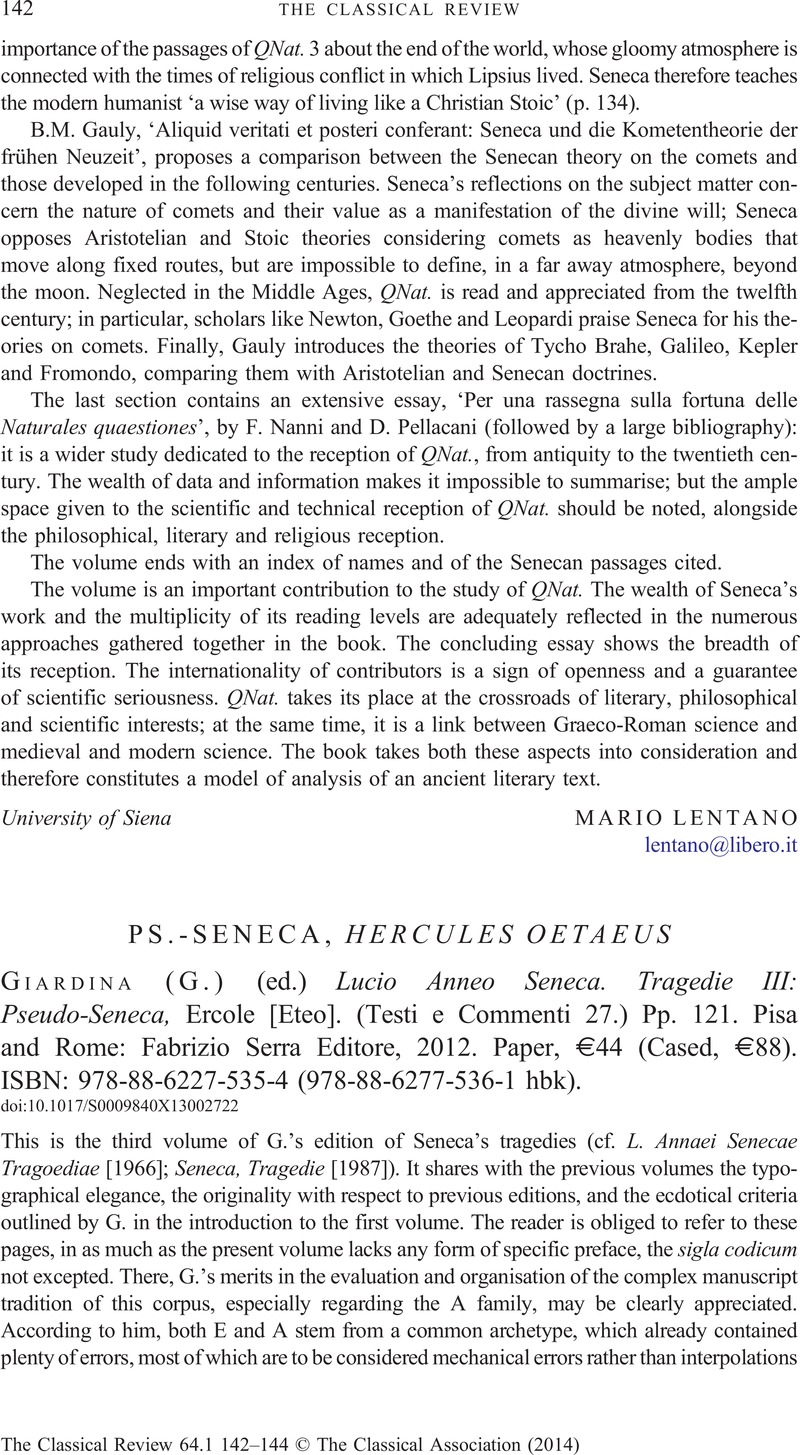No CrossRef data available.
Article contents
PS.-SENECA, HERCULES OETAEUS - (G.) Giardina (ed.) Lucio Anneo Seneca. Tragedie III: Pseudo-Seneca, Ercole [Eteo]. (Testi e Commenti 27.) Pp. 121. Pisa and Rome: Fabrizio Serra Editore, 2012. Paper, €44 (Cased, €88). ISBN: 978-88-6227-535-4 (978-88-6277-536-1 hbk).
Review products
Published online by Cambridge University Press: 20 March 2014
Abstract

- Type
- Reviews
- Information
- Copyright
- Copyright © The Classical Association 2014
References
1 Cf. Zwierlein, O., Kritischer Kommentar zu den Tragödien Senecas (1986)Google Scholar; Fitch, J.G., Annaeana Tragica. Notes on the Text of Seneca's Tragedies (2004)Google Scholar.
2 ‘La figura etimologica … A Seneca è carissima … la ripetizione è uno dei grandi mezzi di collegamento della prosa senecana’ ( Traina, A., Lo stile ‘drammatico’ del filosofo Seneca [1995 4], pp. 30–1)Google Scholar. On the similarity of stylistic devices between tragedies and prose works, von Albrecht, M., Wort und Wandlung. Senecas Lebenskunst (2004), pp. 99–129 CrossRefGoogle Scholar.
3 Cf. Quint. Inst. 12.2.11: uis amnium maior est altis ripis multoque gurgitis tractu fluentium quam tenuis aquae et obiectu lapillorum resultantis. In HF 554 we find stat nigro pelagus gurgite languidus, but it refers to the Styx.
4 G. writes Trahina but obviously means Trachina, as the apparatus shows.
5 Except for a dubious passage in Horace (Carm. 1.3.19), quoted by G. in connection with a similar case in l. 502. For turbidum mare cf. Ov. Trist. 1.11.34; Sen. Nat. 4a.2.8.
6 Cf. Ov. Ars 2.468–9: terramque fretumque/ sideraque (and Sil. 17.37–8).
7 Fitch (2004), p. 191; Billerbeck, M., Somazzi, M., Repertorium der Konjecturen in den Seneca-Tragödien (2009), p. 177CrossRefGoogle Scholar.
8 Billerbeck (2009), p. 207.




